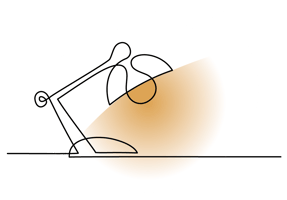- Juridisch advies
- AI
- Security
- Legal tech
- Professional inhuren
- Opleidingen

ICT en recht is een functioneel vakgebied dat ook nog eens verandert door de tijd. Langs de lijnen van de kern grondrechten van de informatiemaatschappij (privacy, IE, informatievrijheid en ondernemingsvrijheid) geeft dit boek een overzicht van de juridische kaders rondom technologische ontwikkelingen. Aan de hand van vele voorbeeldcasussen en dilemma’s leer je het geleerde in de praktijk te brengen. Je leert actief te zoeken binnen relevante jurisprudentie en wetgeving en daarmee praktische oplossingen te schetsen voor gegeven casussen.
Prijs: € 64,- incl. btw
Chapter 1: Naar een afbakening van het begrip ‘ICT-recht’
Het vakgebied technologierecht, bestaat dat wel?
Chapter 2: Internet: de drukpers van de informatiemaatschappij
Van academische vrijplaats tot hoeder van de democratie
Chapter 3: Het auteursrecht reageert
De invloed van IE op de vorming van het technologierecht
Chapter 4: Van webshop tot cloud
Hoe online ondernemen innoveerde en transformeerde
Chapter 5: De weg terug naar online privacy
Een zoektocht naar de beteugeling van de data-industrie
Chapter 6: Internet governance en handhaving
The Net interprets censorship as damage and routes around It
Chapter 7: Innovatie leidt en de wet volgt
De continue worstelpartij tussen innovatie en regulering
Chapter 8: Code as law versus rule of law
De invloed van software op handhaving
![ict-en-recht-cover[85]](https://www.ictrecht.nl/hs-fs/hubfs/Boeken/ict-en-recht-cover%5B85%5D.png?width=506&height=717&name=ict-en-recht-cover%5B85%5D.png)
Bent je op zoek naar de gebruikte referenties in het boek? Zoek niet verder. Wij bieden nu de referenties per hoofdstuk ook online aan!

Ben je op zoek naar juridisch advies over internetrecht of privacy in gewone taal? Wil je nalezen waar je aan toe bent als internetondernemer, bijvoorbeeld als webwinkelier of hostingbedrijf? Dan zijn onze boeken met praktisch juridisch advies iets voor jou.
Met onze boeken krijg je alle relevante juridische informatie over jouw vakgebied. Elk boek is voorzien van een aantal handige checklists waarmee je kunt nagaan of je aan de wet voldoet,
Meld je nu aan voor één van de nieuwsbrieven van ICTRecht en blijf op de hoogte van onderwerpen zoals AI, contracteren, informatiebeveiliging, e-commerce, privacy, zorg & ICT en overheid.